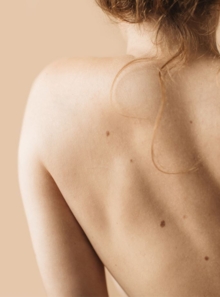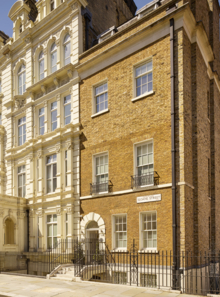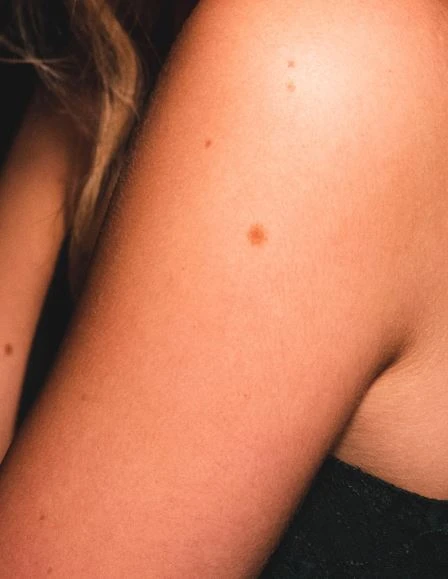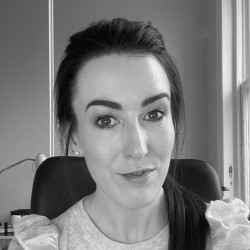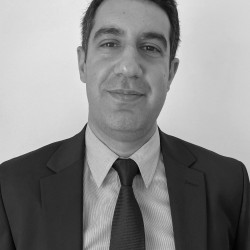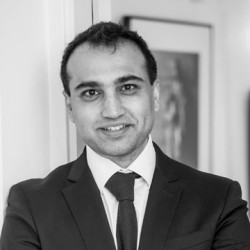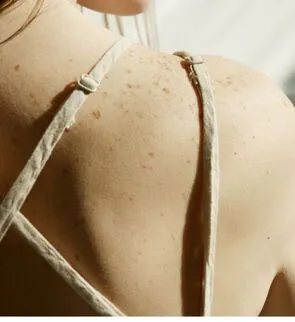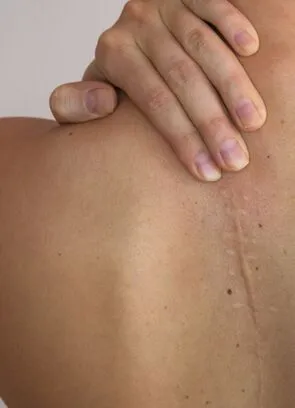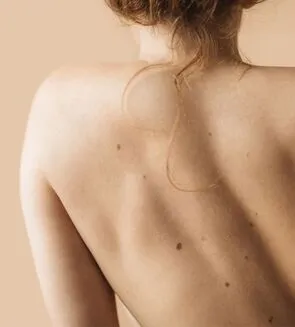Medically Reviewed January 2024,
by Dr. Susan Mayou (GMC: 2405092) - founder of the Cadogan Clinic and one of the world's leading dermatologists
What is Mole Removal?
Moles are usually harmless and it is possible to live with them without any complications.
Moles can be a sign of cancer, however, so if a mole on your body looks suspicious to a Dermatologist, it should be removed immediately to eliminate the risk of further development and the possibility of skin cancer. Early detection saves lives, if they do turn out to be cancerous.
Mole removal is also a quick and highly effective procedure for the removal of cosmetic blemishes or moles with no cancer risk, which any patient would like removed purely for aesthetic reasons.
Mole removal is a surgical technique to ensure that all suspicious, worrying or unsightly moles are safely removed.
We offer a 'see & treat' approach, which means a mole can be assessed by a specialist dermatologist and then removed in the same visit at one of our on-site theatres, if removal is recommended or desired.
Mole removal is a quick, pain-free procedure to remove unwanted or worrying moles under local anaesthetic.
We offer a variety of techniques to remove moles, ranging from freezing (cryotherapy) and mole shaving to traditional surgical removal and also the most advanced 'Mohs' surgery. Procedures takes less than half an hour.
We recommend you seek professional attention for any of your moles if you notice one or more of the following symptoms:
- It has/is changing colour
- It has/is changing shape and size
- It is inflamed, itchy or painful
- It is protruding or causing irritation (for example, it’s catching on clothing)
Get in touch
Why do people have it?
Your dermatologist will proceed with a mole removal for any of the following main reasons
- the mole is dangerous and needs to be removed for precise identification (histology) and treatment to eliminate the risk of cancer
- the mole is considered potentially dangerous and you would rather eliminate the risk now than continue monitoring it and having regular check-ups
- the mole is protruding and is easily irritated by clothing (for example, catching on bras, belts etc)
- the mole is cosmetically bothering you and you would like it removed.
Our ABCDE Mole checklist
Below is a helpful checklist you can go through at home, but it's always recommended to book in with a doctor if you have any changes to your moles or freckles, or if you suspect any of them may be cancerous and good candidates for removal.

The cost of Mole Removal
What makes our mole removal service different?
Dermatologist-Led: our mole removal service is dermatologist-led, meaning that every mole removal patient is seen and treated by a trained dermatologist
Plastic surgeon- supported: we have a team of fifteen plastic surgeons who provide support to our dermatology team for more complex removal cases or reconstructions, or in cases where the patient is particularly sensitive to scarring
Rapid, Same-day Removal: we able to offer rapid, same day removal of worrisome moles due to our three fully staffed on-site theatres
Mohs Surgery: we are one of the few facilities in London to offer the latest, cutting-edge Mohs surgery, the optimal approach for removing skin cancers as determined by NICE (National Institute for Health & Care Excellence)
Mole Removal Specialists
At the Cadogan Clinic we have assembled a leading team of dermatologists, skin cancer specialists and plastic surgeons to ensure that not only can your moles be properly monitored, but swiftly and effectively removed with minimal scarring, should they be recommended for surgical removal.
Mole Removal at Cadogan Clinic
At the Cadogan Clinic we have assembled a leading team of dermatologists, skin cancer specialists and plastic surgeons to ensure that not only can your moles be properly monitored, but swiftly and effectively removed with minimal scarring, should they be recommended for surgical removal.
Your moles can be mapped, reviewed and removed all in a single visit, if any moles provide cause for concern.
Our mole removal service is the first to have been approved by the British Skin Foundation, and remains the gold standard mole check and removal service in the UK to this day.
Cadogan Clinic. A strong tradition of innovation

Founded in 2004 by world renown dermatologist Dr Susan Mayou, we now work with over 100 leading consultants and successfully treat over 20,000 patients each year. We have been winning industry awards since inception.
Get in touch
Frequently Asked Questions
How much does mole removal cost?
Mole removal with one our specialist surgical team starts from £599.
How long does mole removal take?
The whole process does not take longer than half an hour.
What happens during a mole removal?
Moles are usually removed under local anaesthetic. After careful examination, the area around the mole will be cleaned and a surgical drape placed around the area to ensure a sterile working area.
Your surgeon will cut all the way around the mole, typically in an oval shape. The mole(s) will be placed in a specimen jar and sent to a lab for analysis. Your surgeon will close the wound with stitches, if required, and cover it with a dressing.
What happens after mole removal?
You will be able to go home after your procedure and return to work. It is unusual for such a minor procedure to impact your usual activities.
If you experience any pain following your mole removal, over the counter pain relief such as Paracetamol can be used. Results of the analysis will be shared with you by our team within 24 hours.
Sometimes your surgeon will ask you to return a few days following your mole removal to inspect the wound and change the dressing. If the wound area becomes red, swollen or bleeds be sure to contact our 24 hour on-call nursing service. You may also be required to visit our nursing team at a later date to have your stitches removed.
What makes our mole removal service different?
- Dermatologist-Led: our mole removal service is dermatologist-led, meaning that every mole removal patient is seen and treated by a trained dermatologist
- Plastic surgeon- supported: we have a team of fifteen plastic surgeons who provide support to our dermatology team for more complex removal cases or reconstructions, or in cases where the patient is particularly sensitive to scarring
- Rapid, Same-day Removal: we able to offer rapid, same day removal of worrisome moles due to our three fully staffed on-site theatres
- Mohs Surgery: we are one of the few facilities in London to offer the latest, cutting-edge Mohs surgery, the optimal approach for removing skin cancers as determined by NICE (National Institute for Health & Care Excellence)
Is mole removal effective?
Mole removal is the most comprehensive safeguard against skin cancer and is recommended for anyone worried about their moles.
Can I get a mole removed on the NHS?
The NHS no longer delivers "non-essential" mole treatments, meaning that the majority of mole removal procedures, or the removal of skin 'lumps and bumps' (e.g. warts, verrucae and skin tags), can no longer be administered for free on the NHS.
A mole that is not believed to be life-threatening or cancerous will not generally be removed on the NHS.
For those that are considered cancerous, we recommend that all patients establish the exact length of the expected waiting list with your local NHS Trust. These are unfortunately currently subject to significant delays, due to the disruption caused by the COVID crisis.
Can I get a mole removed for cosmetic reasons?
Absolutely. This is an extremely common cause for patients asking for a mole removal and our team of cosmetic specialists are more than delighted to assist.
Can I remove moles on the face?
People often choose to remove moles for purely cosmetic reasons, especially if they are moles on the face which can make them feel self-conscious. Our doctors at Cadogan Clinic include highly-experienced Plastic and Cosmetic surgeons who will remove moles whilst leaving minimal scarring on your face.
Moles are common skin growths which can be flat and pigmented or protruding. They affect the appearance and people often prefer to remove them on cosmetic grounds.
In some cases, the moles can start changing in colour, shape, and size. This might be a warning sign of cancer and you should see a dermatologist immediately.
Facial moles are removed surgically after an injection of local anaesthetic to numb the area. The tissue removed is sent for pathological examination and the small skin defect is stitched up carefully. The stitches are removed after 5-7 days and the resulting line scar gradually fades with time.
Will mole removal leave a scar?
A mole or naevus is made up of naevus cells, which extend right through the skin. Therefore, if removal is to be complete, it will leave a hole. Whichever way this heals, there will be a scar. It is our job to minimize this scar.
If the mole is tiny, leaving the hole to heal on its own, may be best. Usually, the hole is refashioned in order to allow stitching in the direction which gives the least scarring, usually in the line of skin tension, for example, the smile lines on the face. Face stitches can be removed early before they themselves cause extra scars, but elsewhere we might use buried dissolving sutures reinforced with tape to again avoid stitch marks.
If the mole is only a problem because it is raised, then sometimes they can be snipped or lasered off. Remember, however, that although the skin is now flat, half the naevus is still there. It might regrow with pigment or look like a mottled scar. This is not often acceptable on the face. Hairy moles need to be completely removed to stop regrowth of the hair from deep hair follicles. A suspicious mole that is thought could be malignant should be cut out to provide tissue for diagnosis under the microscope.
Whichever method is used, we need to keep the skin clean to avoid infection and a worse scar. Antibiotics should not be used to avoid infection, being reserved for treatment of infection.
Some areas of the body make for worse scars than others and some people are more prone to scarring. We now have a genetic test (BILHI) to determine if you are likely to get a bad scar, a keloid. The Cadogan Clinic is the first place in the UK to offer this.
How can I reduce my risk of skin cancer?
There are many ways that you can reduce your risk of skin cancer.
- Limit your exposure to UV radiation
- Use broad-spectrum sunblock when exposed to the sun. Broad-spectrum will help protect against both UVA and UVB rays
- Use a minimum of SPF 30 in your sunblock, ensure the UVA protection is adequate as denoted by UVA and apply thickly and frequently
- Avoid the use of sunbeds (Using sunbeds for the first time below the age of 35 increases the risk of developing melanoma by nearly 60%
- Perform a monthly skin self-examination looking for ABCDE of moles
ABCDE Checklist for suspicious features:
- Asymmetry: Moles that are an irregular shape and have two different halves.
- Border: Moles with a ragged border.
- Colours: Moles that have a mix of two or more colours.
- Diameter: Moles that are larger than 6mm (1/4 inch) diameter.
- Evolution: A mole which has changed in size or shape over time.
When performing your monthly skin checks ensure you are doing it after a bath or shower, in a well-lit room, with the aid of a full-length mirror looking for any changes in moles thoroughly.
You can also self-assess yourself for risk of melanoma. The Melanoma Risk Factor Assessment checklist can tell you if you would benefit from a mole check by a dermatologist, or from more regular self-examinations.
The Melanoma Risk Factor Assessment:
- Have you ever been sunburnt badly?
- Does your skin burn first and then tan? Do you tan at all?
- Do you have any outdoor hobbies?
- Have you ever used sunbeds?
- Have you ever lived anywhere abroad that was very hot/sunny?
- Have you ever had a job where you worked outdoors?
- Has anyone in your family ever had melanoma?
- Do you wear sunblock when exposed to the sun?
If you notice any changes to a mole or a patch of skin, it is important to seek the advice of your GP or a dermatologist as soon as possible. If your regular GP has any concerns about the changes in your moles, they will refer you to a consultant dermatologist for further examination.
A dermatologist will perform a full skin examination to check all of your moles. If the dermatologist has any concerns about any unusual moles or patches of skin, they will either go on to remove (excise) the mole or take a sample of a suspicious patch of skin (biopsy) to send in for analysis.
It is important to note that not all changes to moles are the results of skin cancer. It is normal for moles to change in size, number or appearance over time, even some disappearing entirely. Hormonal changes, like those that occur with puberty or pregnancy, can also cause moles to increase in number or to become darker.
What makes the Cadogan Clinic mole removal different?
Our service is overseen by fully trained medical professionals, and is unlike the nurse-led equivalents found on the high street.
- Dermatologist-Led: our mole mapping service is dermatologist-led, meaning that every mole map patient is seen by a trained dermatologist and not simply a nurse.
- Computerized Mapping: our mapping tool is computerized and is consequently able to pick up even the subtlest changes in size and shape of your moles
- Dermoscopy: each mole is also reviewed by our dermatologist team under a high-powered dermatoscope, or dermatology microscope, in order to overlay this assessment with the very best trained professional opinion
- Rapid, Same-day Removal: We are also able to offer rapid, same day removal of worrisome moles since we have three fully staffed theatres on site. For the removal of bigger or deeper moles, or those in more visible places and sensitive to scarring, we have a team of plastic surgeons who can undertake the procedure
- Mohs Surgery: We also offer cutting-edge Mohs surgery, the optimal approach for removing skin cancers as determined by NICE (National Institute for Health & Care Excellence)
What is a cancerous mole?
Most people have moles which remain perfectly fine throughout their lifetime but if you notice signs that a mole has changed in any way, it is wise to have it checked by a dermatologist or doctor during a mole check to make sure it is not cancerous.
This kind of skin cancer includes melanomas, basal cell carcinomas, and squamous cell carcinomas. Moles can also be precancerous lesions, changes that are not cancer but could become cancer over time.
The good news is that skin cancer can be cured if it's found and treated early. Contact the Mole Clinic at Cadogan Clinic for more information.
What should I do if I have a bleeding mole or itchy mole?
Bleeding or itchy moles can occur when they have been irritated or scratched – moles catching on clothing, being cut by a razor, makeup application, scratching an insect bite and hair removal are all very common triggers. However, these are also sign that the mole is cancerous.
There are definite signs that a mole could be a melanoma and individuals should seek immediate advice from a dermatologist. If you have a new mole or a change in your moles such as bleeding, changes in shape, size or colour, itchy or painful moles- it's imperative that you seek medical advice at the earliest possible stage.
Patients should be vigilant in having moles checked annually or as advised by your dermatologist if you have a history of previously abnormal naevi (moles) or skin cancer. An early diagnosis is crucial in managing this potentially life-threatening disease; skin cancer which is detected and removed early is almost always curable.
How To Find Us
The Cadogan Clinic is based at 120 Sloane Street in Chelsea, just off Sloane Square and the Kings Road.
We are accessible by all major bus routes that pass through Sloane Square and Sloane Street, as well as Sloane Square tube station.
We are just a 5 minute walk northwards up Sloane Street once you have arrived at Sloane Square.
Local pay parking is available just around the corner from the Clinic on Cadogan Gate, Cadogan Square and Cadogan Gardens. Our local residential parking zone is the Royal Borough of Kensington & Chelsea.
Address: 120 Sloane Street, Chelsea, London, SW1X 9BW
![]() Aesthetics Medicine Awards
Aesthetics Medicine Awards![]()



